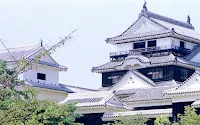I was told by my Japanese friends that there are abundance of dialects (ho~gen) in Japan. This ranges from Okinawa in the south to the dialects of To~hoku in the north. The northern island Hokkaido~ has no specific Japanese dialect. Having been colonized by people from Tokyo and To~hoku area around at the end of nineteenth century, the dialects from these regions are heard in Hokkaido~. Hokkaido's considerable population, Ainu's language is also unrelated to Japanese.
The major groups of dialects are of Western Japan - Kansai including Osaka and Kyoto, Eastern Japan - Kanto~ including Tokyo, the Southwest Kyushu and Tohoku. The Tokyo dialect which is one of the Kanto dialects has some features that makes it different from standard Japanese (Hyo~jun go). Tokyo dialect is often heard as part of informal speech in the place where we live.












 Many Japanese family names derive from features of the rural landscape and nature. For example, Ishikawa (石川) means "stony brook", Kawa 川 means River. Yamamoto (山本) means the base of the mountain, and Inoue (井上) means above the well. There are many examples, but my brain stored only a few till now. I am purposely avoiding the name of my colleagues. I have taken special permission from Tabe-san before mentioning his name in this blog.
Many Japanese family names derive from features of the rural landscape and nature. For example, Ishikawa (石川) means "stony brook", Kawa 川 means River. Yamamoto (山本) means the base of the mountain, and Inoue (井上) means above the well. There are many examples, but my brain stored only a few till now. I am purposely avoiding the name of my colleagues. I have taken special permission from Tabe-san before mentioning his name in this blog.






